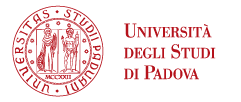Cardiovascular Fluid Dynamics
Francesca Maria Susin – francescamaria.susin@unipd.it
Paolo Peruzzo – paolo.peruzzo@dicea.unipd.it
Luigi Di Micco – luigi.dimicco@dicea.unipd.it
Giulia Comunale – giulia.comunale@phd.unipd.it
Research areas:
The activities of the group focus on physio-pathological blood circulation in the human body, and are aimed at developing tools and devices for diagnosis and treatment of cardiovascular diseases, either acquired or congenital. The research combines various approaches (in-vitro and in-silico modelling, in-vivo data) and blends multidisciplinary skills spanning from engineering to clinical expertise.
In-vitro tests are mainly performed at the Pulse Duplicator available at the Laboratory of Hydraulics and Hydraulic Constructions of the ICEA Department, where the systemic circulation is reproduced. Pressure and flow rate waves can be measured along the loop. Stero-piv instrumentation will be soon available on the PD. Among the in-vitro activities we recall: hemodynamic performance assessment of aortic prosthetic valves; analysis of the effects of test fluid viscosity on performance data; measurement of aortic arch deformation under physiological conditions.
In-silico models at different geometrical scales are also developed and implemented (lumped parameters, one-dimensional, three-dimensional models, the latter also with fluid-structure interaction). Multi-physics modelling is also performed. We want to point out that the research group has developed: i) 0D models of the full circulation with right ventricle dysfunction and of the single ventricle circulation; ii) 1D complete model of the stenotic aortic valve flow; iii) 3D model of deformable aortic arch hemodynamics under physiological conditions; iv) 3D model of mitral valve prolapse repair by the implant of artificial suture; v) 3D model of incipient haemolysis in prosthetic transvalvular flow.
Data from in-vivo measurements on patients (catheterism pressures, echocardiographic velocities, morphometric data from echo, ct scan, rmi) are adopted to build up digital models of the anatomical districts (which are also used to produce physical replicas by 3D printing techniques) and for in-silico models validation.
The group was also involved in translational research aimed at developing innovative biomedical devices for the treatment of paravalvular aortic regurgitation.
Finally, the research group has recently focused the attention on cerebral fluid circulation, clarifying one of the mechanisms that drive its circulation in the ventricular apparatus.
Keywords: Fluid Dynamics, cardiovascular circulation, biological fluids, modelling





